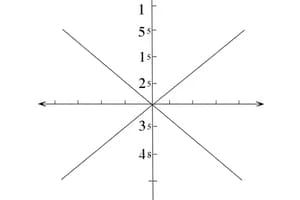Podcast
Questions and Answers
What is the set of numbers that includes whole numbers, their opposites, and 0, but excludes fractions and decimals?
What is the set of numbers that includes whole numbers, their opposites, and 0, but excludes fractions and decimals?
Integers
What is the definition of a rational number?
What is the definition of a rational number?
A number that can be written as a ratio of integers, in the form A/B, where A and B are both integers, and B cannot be 0.
How can an integer be written as a fraction or decimal?
How can an integer be written as a fraction or decimal?
For example, 7 can be written as 7/1 or 0.875.
What is the absolute value of a number?
What is the absolute value of a number?
How can you graph a rational number on a number line?
How can you graph a rational number on a number line?
How do you compare rational numbers with opposite signs?
How do you compare rational numbers with opposite signs?
What is the temperature closest to the freezing point of water (0°C) in a table of temperatures?
What is the temperature closest to the freezing point of water (0°C) in a table of temperatures?
How do you determine the temperature farthest from 0°C in a table of temperatures?
How do you determine the temperature farthest from 0°C in a table of temperatures?
Which of the following is not a characteristic of an integer?
Which of the following is not a characteristic of an integer?
What is the equivalent decimal representation of the integer 7?
What is the equivalent decimal representation of the integer 7?
What is the absolute value of -5?
What is the absolute value of -5?
How can you find the absolute value of a number on a number line?
How can you find the absolute value of a number on a number line?
Which of the following is true when comparing rational numbers?
Which of the following is true when comparing rational numbers?
What is the purpose of finding the absolute value of a temperature in a table of temperatures?
What is the purpose of finding the absolute value of a temperature in a table of temperatures?
Which of the following is an example of a rational number?
Which of the following is an example of a rational number?
What is the result of comparing the absolute values of two rational numbers?
What is the result of comparing the absolute values of two rational numbers?
What is the advantage of using a number line to graph rational numbers?
What is the advantage of using a number line to graph rational numbers?
What is the relationship between the absolute value of a number and its position on a number line?
What is the relationship between the absolute value of a number and its position on a number line?
Flashcards are hidden until you start studying
Study Notes
Integers and Rational Numbers
- Integers: the set of whole numbers and their opposites, including 0, positive numbers, and negative numbers, but no fractions or decimals.
- 0 is neither positive nor negative.
- Rational numbers: numbers that can be written as a ratio of integers, in the form A/B, where A and B are both integers, and B cannot be 0.
Converting Integers to Fractions or Decimals
- An integer can be written as a fraction or decimal, e.g., 7 = 7/1 or 0.875.
- Fractions and decimals are equivalent representations of rational numbers.
Absolute Value
- Absolute value: the distance between a number and 0 on the number line.
- The absolute value of a number is always positive.
- The absolute value of a number is the distance from 0 to the number on the number line, regardless of the direction (positive or negative).
Graphing Rational Numbers on a Number Line
- A number line can be used to visualize and compare rational numbers.
- To graph a rational number on a number line, plot the point on the line and count the units from 0 to determine the absolute value.
- The absolute value of a number can be found using the number line, without actually drawing the line.
Comparing Rational Numbers
- To compare rational numbers, read the comparison statement from left to right.
- Use the symbols < (less than), > (greater than), and = (equal to) to compare numbers.
- When comparing numbers with opposite signs, a positive number is always greater than a negative number.
- Use the absolute value of a number to compare it to another number, regardless of sign.
Practical Example: Temperature Comparison
- A table of temperatures in degrees Celsius can be compared using absolute values and number lines.
- The temperature closest to the freezing point of water (0°C) is the one with the smallest absolute value.
- The temperature farthest from 0°C is the one with the largest absolute value.
Integers and Rational Numbers
- Integers include whole numbers, their opposites, and 0, but exclude fractions and decimals.
- 0 is neither positive nor negative.
- Rational numbers are numbers that can be expressed as a ratio of integers, i.e., A/B, where A and B are integers and B ≠ 0.
Converting Integers to Fractions or Decimals
- Integers can be written as fractions or decimals, e.g., 7 = 7/1 or 0.875.
- Fractions and decimals are equivalent representations of rational numbers.
Absolute Value
- Absolute value is the distance between a number and 0 on the number line.
- The absolute value of a number is always positive.
- The absolute value of a number is the distance from 0 to the number on the number line, regardless of direction (positive or negative).
Graphing Rational Numbers on a Number Line
- A number line can be used to visualize and compare rational numbers.
- To graph a rational number, plot the point on the line and count the units from 0 to determine the absolute value.
- The absolute value of a number can be found using the number line without drawing the line.
Comparing Rational Numbers
- Compare rational numbers by reading from left to right.
- Use <, >, and = to compare numbers.
- A positive number is always greater than a negative number when comparing numbers with opposite signs.
- Use absolute value to compare numbers, regardless of sign.
Practical Example: Temperature Comparison
- Use absolute values and number lines to compare temperatures in degrees Celsius.
- The temperature closest to 0°C has the smallest absolute value.
- The temperature farthest from 0°C has the largest absolute value.
Integers and Rational Numbers
- Integers include whole numbers, their opposites, and 0, but exclude fractions and decimals.
- 0 is neither positive nor negative.
- Rational numbers are numbers that can be expressed as a ratio of integers, i.e., A/B, where A and B are integers and B ≠ 0.
Converting Integers to Fractions or Decimals
- Integers can be written as fractions or decimals, e.g., 7 = 7/1 or 0.875.
- Fractions and decimals are equivalent representations of rational numbers.
Absolute Value
- Absolute value is the distance between a number and 0 on the number line.
- The absolute value of a number is always positive.
- The absolute value of a number is the distance from 0 to the number on the number line, regardless of direction (positive or negative).
Graphing Rational Numbers on a Number Line
- A number line can be used to visualize and compare rational numbers.
- To graph a rational number, plot the point on the line and count the units from 0 to determine the absolute value.
- The absolute value of a number can be found using the number line without drawing the line.
Comparing Rational Numbers
- Compare rational numbers by reading from left to right.
- Use <, >, and = to compare numbers.
- A positive number is always greater than a negative number when comparing numbers with opposite signs.
- Use absolute value to compare numbers, regardless of sign.
Practical Example: Temperature Comparison
- Use absolute values and number lines to compare temperatures in degrees Celsius.
- The temperature closest to 0°C has the smallest absolute value.
- The temperature farthest from 0°C has the largest absolute value.
Studying That Suits You
Use AI to generate personalized quizzes and flashcards to suit your learning preferences.




